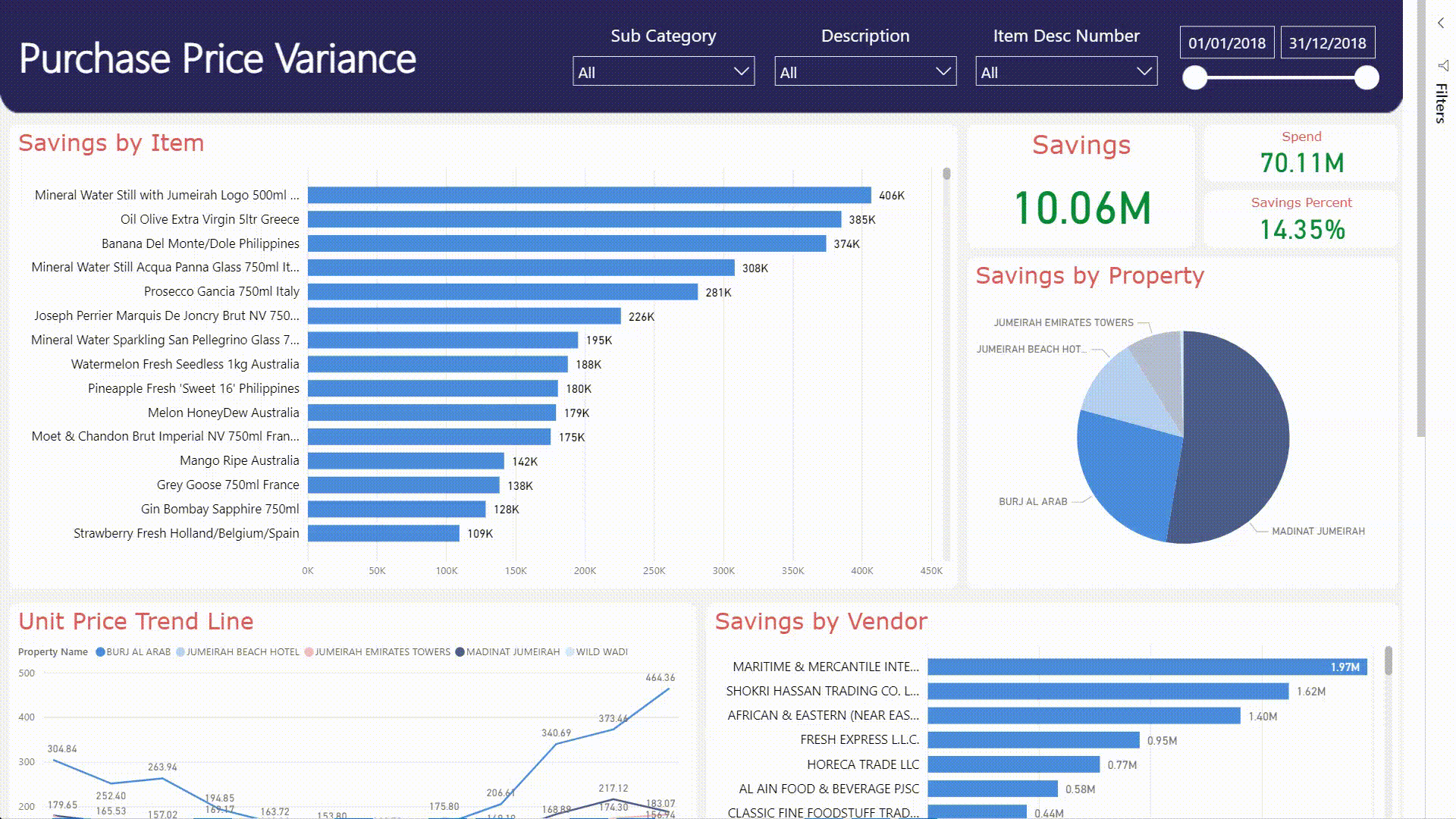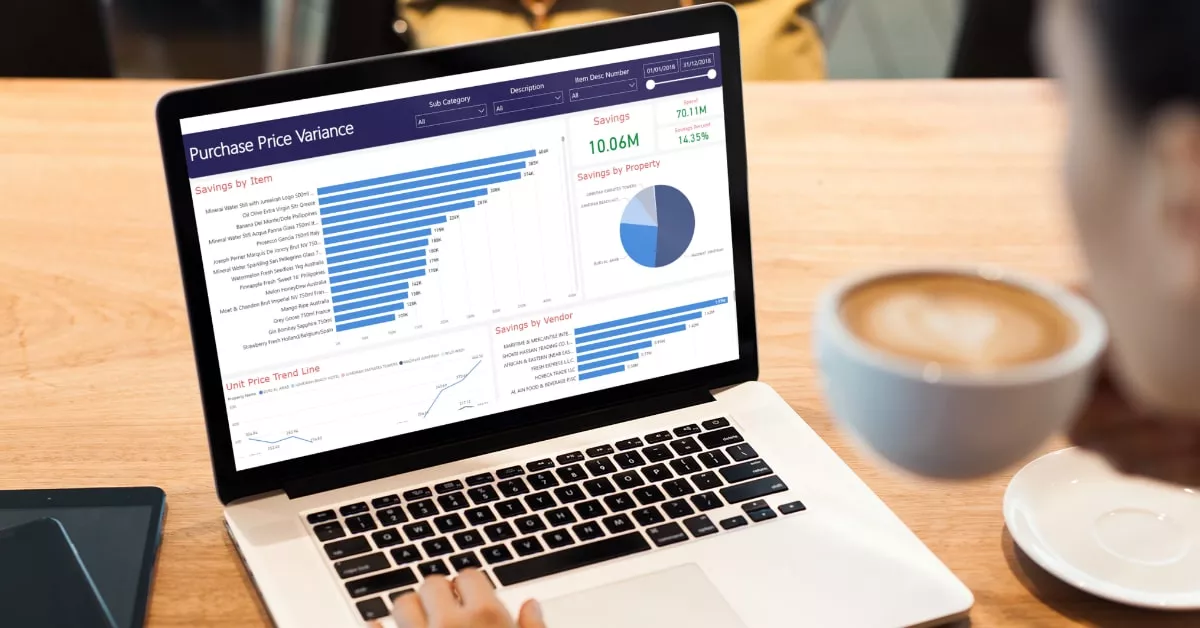In Procurement, Purchase Price Variance (PPV) is the difference between the standard price of a purchased material and its actual price. In Short, Purchase Price Variance = (Actual price – Standard price) x Quantity purchased.
What is Purchase Price Variance (PPV)?
Companies that are selling products are either in control of the manufacturing or implementation cost of the products as well as the delivery and other associated costs which are directly involved within the complete supply chain. Purchase Price Variance also known as (PPV) is described as the difference between the price that is given to a supplier to purchase a product and the actual price of the product. A positive variance would then be associated if the actual cost of the product were to appreciate, on the other hand, should the value of the actual cost depreciate then this would be defined as a negative variance. The price the manufacturers would want the company to pay would be the actual price and would consider factors such as the quality, quantity, and distribution. Purchase Price Variance (PPV) is solely centered on the standard cost and would include several components that may not match the procuring state for the company. The main aim of any business is to be able to procure materials for a price that is less than the amount budgeted. Read More about Spend Forecasting.
When discussing Purchase Price Variance – PPV, and Material Price Variance diversity, Andrew Stafford – Director at Simfoni explains the following: ”Purchase Price Variance also known as PPV is the overall difference in price between existing or new orders for a basket of Goods and Services. Purchase Price Variance aka PPV exclusively looks at the price element of goods – A positive Purchase Price Variance is when the actual costs have increased over the standard cost, and a negative Purchase Price Variance means the actual costs have decreased over the standard price.”
Andrew Spafford also explains that ”A company might gain a favourable price variance when they buy products in bulk or bigger quantities, however, this method brings the risk of excess inventory. Purchasing smaller are also risky as the business may run out of supplies, which can result in an unfavourable price variance. Businesses must plan carefully using resources and data to effectively control its price variances and make sure the inventory they are purchasing is of value. Material Price Variance is Individual Price Variance for items ie Widgets, where materials can also mean large Material vs Immaterial. Both Purchase Price Variance – PPV and Material Price Variance can therefore be justified in this way.”
Learn more:- Spend Analytics Guide The comprehensive Guide by Simfoni’s Procurement Professionals
Why is Purchase Price Variance Important and How is it Calculated?
So why is Purchase Price Variance important? Purchase Price Variance or PPV is a metric used by procurement teams to measure the effectiveness of the organisation’s or individual’s ability to deliver cost savings. This concept is vital in cost accounting for evaluating the effectiveness of the company’s annual budget exercise. For the preparation of the budget, the standard price is the one that the management estimates to pay. There is always a price variance in the budget as the team prepares the budget months before the actual purchase of the raw materials.

For Example, Company A at the start of the first quarter estimates that it would require 1,000 units of an item in the second quarter costing $4. On the 1,000 units, Company A would get a 20% discount, bringing the total cost to $3.2 ($4*(1-20%)). However, at the end of the first quarter, the management realizes that it would only need 800 units. Now, it would only get a 10% discount, bringing the cost to $3.6. In this case, the price variance per product is $0.40 ($3.6 – $3.2).
Learn More:– Spend Management
A point to note is that a company may achieve a favorable price variance only by making a bulk purchase. But, this may raise the company’s inventory cost, thus, wiping the benefits gained from a favorable variance. The operating plan of a company also determines whether or not a company has a favorable or unfavorable variance. For instance, if the purchasing department of a company insists on buying in small quantities, it may result in unfavorable price variance.
Therefore it is always favorable to utilise a Standard Purchase Price as this is seen as the most effective way forward especially for those that are manufacturers as you can easily be spending 70% of cost solely on direct material purchases. It is essential to budget and track your standard vs actual prices as this is a vital step for many procurement and finance working individuals and most certainly an important metric when it comes to effective decision making.
How to Reduce Purchase Price Variance?
Not having up to date contract pricing data when products are bought is the sole reason for Purchase Price Variance. The price and actual cost that is shown when the customer chooses the item is different. Sadly, this process means unnecessary time and work would need to be put in if a resolution is required.
When buying, users are more permitted to go towards routes that are less challenging such as an old paper catalogue. However, prices for this would have changed several times therefore would be wrong when the actual Purchase Orderi is received. E-Procurement can therefore have a massive positive effect on reducing the problem as the user is able to go to a single portal where they can select from a whole list of online pricing contracts. Contracts can also be adjusted by the supplier or the procurement department when pricing is available for re-bidding or new contracts are discovered.
PPV Dashboard or Purchase Price Variance Report by Simfoni makes it easy to track Purchase Price Variance. Using Simfoni’s intuitive spend dashboard and insight driven visualization you can quickly see how prices vary and make it a routine practice to track as your company keeps generating more spend.

Learn More:- Savings Management: Methods to save more
With this as the user is no longer going through old catalogues, the purchase price variance would not be as much as an issue as using an E-Procurement tool is more effective and allows for improved contract management. The variance between actual cost and the purchased price would therefore be reduced as better data is available to all users using E-procurement tools.
To summarise, an E-Procurement tool can move a your business years ahead when you take operational efficiency into consideration and purchasing commodities and services. Some E-Procurement tools also integrate with your own financial ERP systems which allow for seamless data exchange and also leaves room for good accounting – your budget will not be compromised. Overall, your procurement method becomes a part of your day-to-day business and no longer causes issues to your organisation when it comes to variance in purchase price.
Contact us today to know more about how Simfoni’s technology and processes can help your organization achieve world-class Spend Analytics and Spend Automation.
Read More:- What is Procure to Pay – A Guide to Procure-to-Pay (P2P) Process



